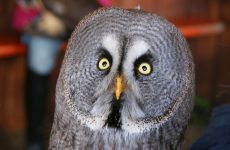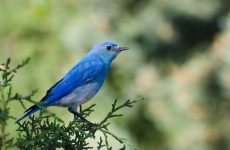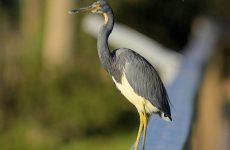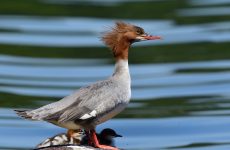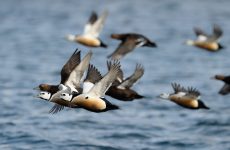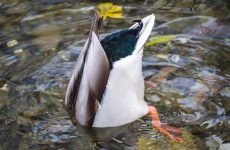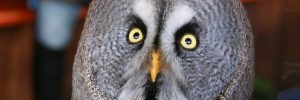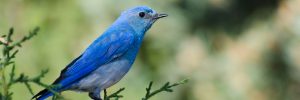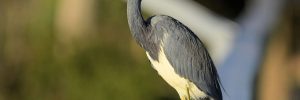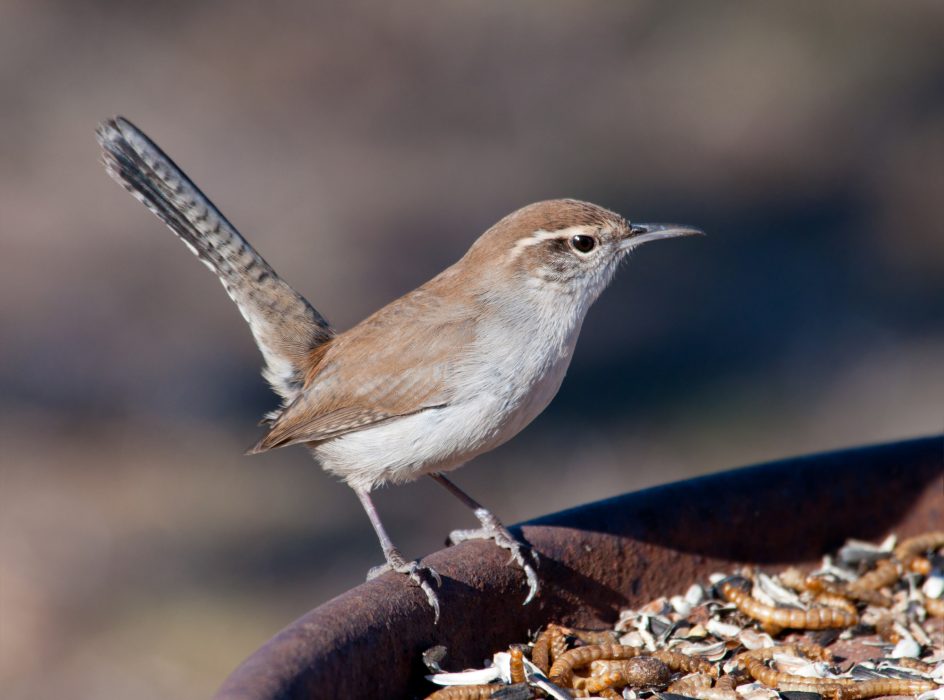
Small brown birds are most often sparrows or wrens but with so many different types which one have you spotted?
This guide will help you identify those little brown birds that are either visiting your backyard or out in the woods and fields.
These small birds are all 9 inches or less in length and are commonly spotted in the US and Canada, so don’t delay get spotting.
Also, get a free picture ID printable for backyard birds for every state to really get you in the know about birds.
18 Small Brown Birds
- Common Yellowthroat
- Song Sparrow
- Chipping Sparrow
- House Sparrow
- Golden-crowned Sparrow
- Carolina Wren
- White-throated Sparrow
- House Wren
- Great-crested Flycatcher
- Female House Finch
- Female Purple Finch
- Eastern Phoebe
- Pine Siskin
- Chestnut-backed Chickadee
- American Tree Sparrow
- Field Sparrow
- Female Brown-headed Cowbird
- Bewick’s Wren
18 Small Brown Birds
1. Common Yellowthroat
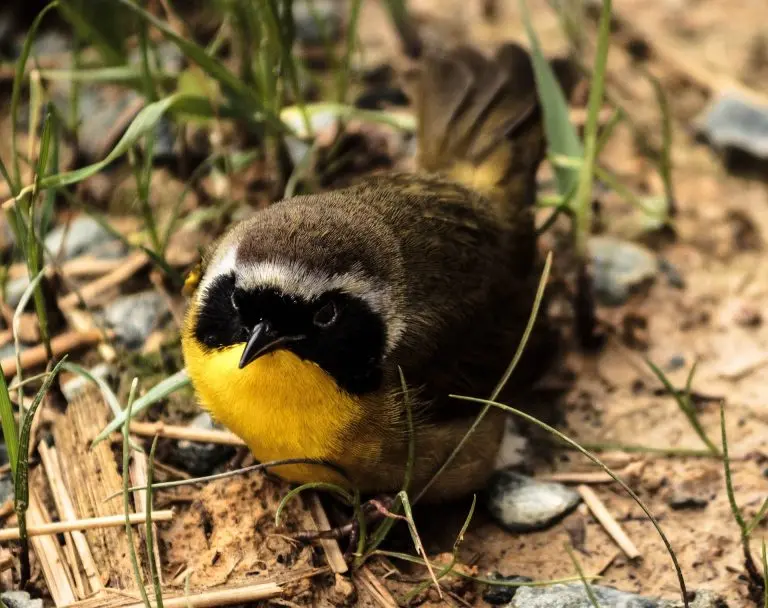
Common Yellowthroats are small brown songbirds that are bright yellow underneath, with long tails. The males have a black mask across the face. The brightness of the yellow can vary geographically and they may be more olive in parts underneath.
- Length: 4.3-5.1 in (11-13 cm)
- Weight: 0.3-0.3 oz (9-10 g)
- Wingspan: 5.9-7.5 in (15-19 cm)
Common Yellowthroats spend the summer breeding over most of North America, except Alaska and northern Canada. Some remain all year along the Gulf Coast and Pacific Southwest.
They can be found in the spring and summer often in marshy or wetland areas and brushy fields living in thick, tangled vegetation.
They eat mostly insects and will be found in large backyards that have dense vegetation.
2. Song Sparrow
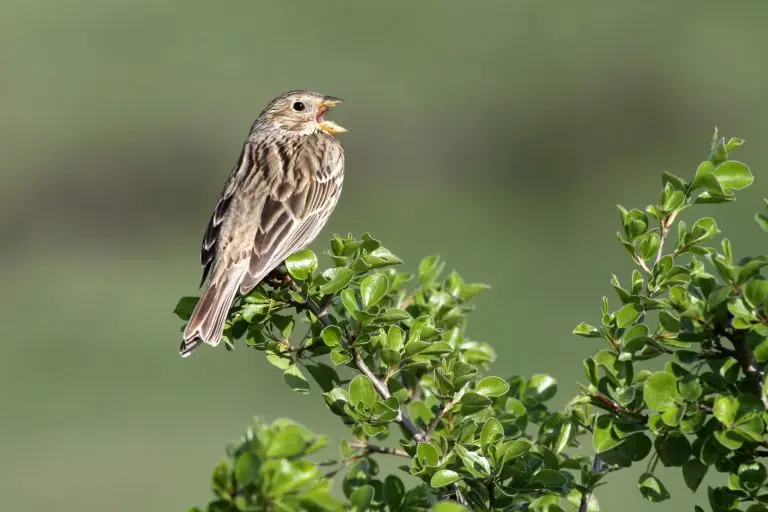
Song sparrows are not as remarkable as other backyard birds but these small brown-streaked birds use their almost constant song to attract mates in spring and summer.
- Length: 4.7-6.7 in (12-17 cm)
- Weight: 0.4-1.9 oz (12-53 g)
- Wingspan: 7.1-9.4 in (18-24 cm)
Song Sparrow live all year in the northern US. Some breed in Canada and then migrate to southern states.
They can be found in open, shrubby, and wet areas often perched on a low shrub singing. They are often found at backyard feeders.
Song Sparrows eat a wide variety of insects and plants including beetles, caterpillars, midges, spiders, and earthworms. They will also eat buckwheat, sunflower, raspberries, wild cherries, blackberries, wheat, and rice.
You can attract more song sparrows to your backyard feeders by putting black oil sunflower seeds, cracked corn, and nyjer on platform feeders.
3. Chipping Sparrow
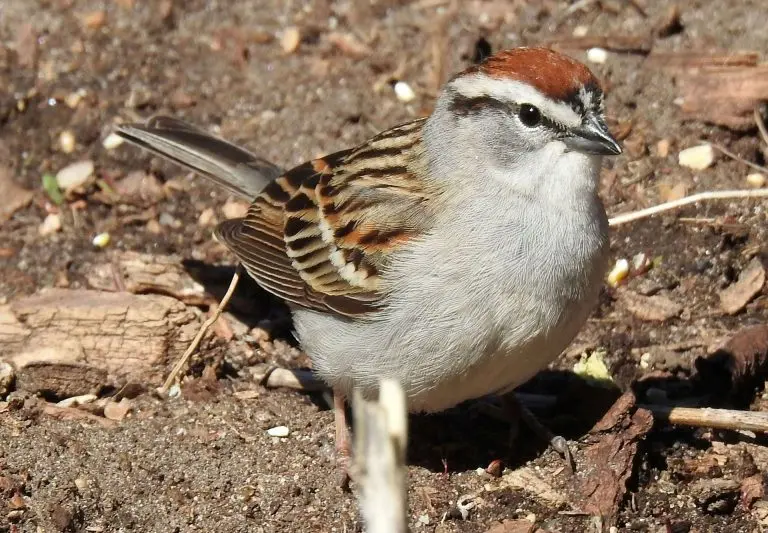
Chipping Sparrows are slender, long-tailed birds that have a grayish belly and brown bracks that are black-streaked, with a rusty crown and black eye line. in winter the colors are more subdued.
- Length: 4.7-5.9 in (12-15 cm)
- Weight: 0.4-0.6 oz (11-16 g)
- Wingspan: 8.3 in (21 cm)
Chipping Sparrows spend their summer breeding over much of North America and Canada before flying to Mexico and Florida for winter. Some remain all year in the Southern States.
They can be found in small flocks on open ground and will come to backyards for many kinds of birdseed.
4. House Sparrow
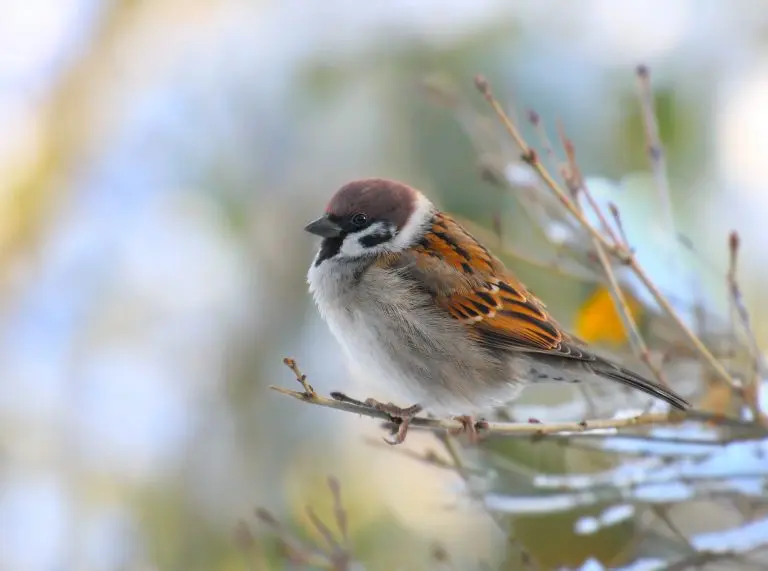
The House Sparrow is another introduced species that has done very well and is now one of the most common birds.
They are small brown-backed birds with black streaks. They have gray and brown heads and white cheeks and a white band around the neck. Their bellies are gray.
- Length: 5.9-6.7 in (15-17 cm)
- Weight: 0.9-1.1 oz (27-30 g)
- Wingspan: 7.5-9.8 in (19-25 cm)
House Sparrows live in all US states and down into Central America.
They are found near houses and buildings and can be quite tame so will eat out of your hand.
They eat mostly grain and seed as well as discarded food. They can be considered a pest as they are non-native but will be found in backyards even if you do not feed them.
You can attract more House Sparrows to your backyard feeders with most kinds of birdseed, including millet, corn, and sunflower seeds.
5. Golden-crowned Sparrow
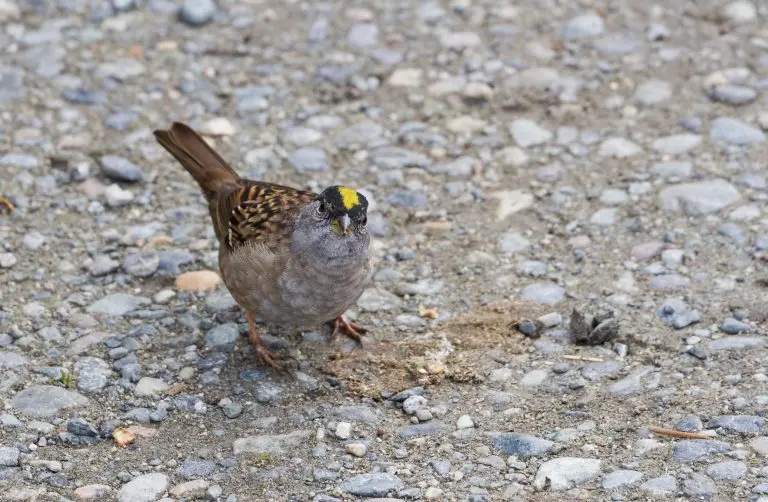
Golden-crowned Sparrows are grayish-brown underneath and streaked brown on the back. Their heads have a black crown and a bright-yellow forehead.
In winter the colors are duller with brown on the crown and the yellow forehead is also duller.
- Length: 5.9-7.1 in (15-18 cm)
- Weight: 1.1-1.2 oz (30-33 g)
Golden-crowned Sparrows breed in Alaska and Western Canada before migrating to the West Coast for winter.
In winter they can be found in weedy fields scratching for seeds such as dock, sumac, and geranium.
They also eat fruit such as apples, grapes, elderberry, and olives. Insects also make up some of their diets, such as ants, beetles, butterflies, and termites.
You can attract more Golden-crowned Sparrows to your backyard with seeds in ground feeders or plant native plants that fruit.
6. Carolina Wren
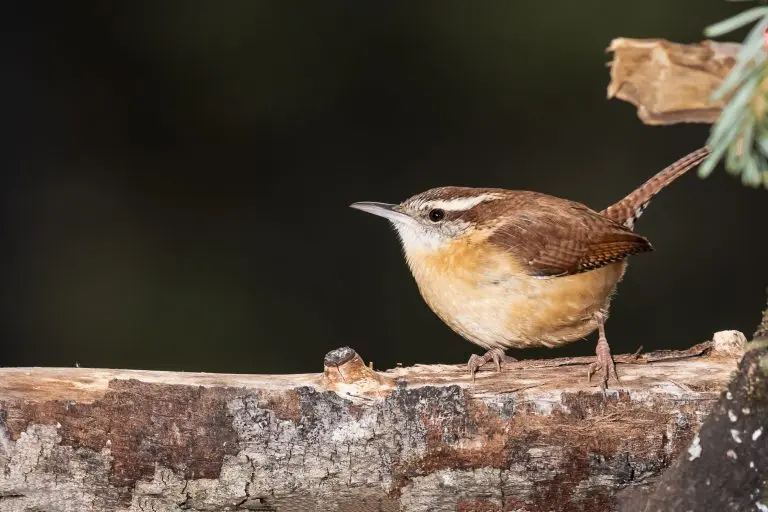
Carolina Wrens are shy birds that are dark brown on top and light brown underneath. They have a white eyebrow stripe and upright tail and loud teakettle song.
- Length: 4.7-5.5 in (12-14 cm)
- Weight: 0.6-0.8 oz (18-22 g)
- Wingspan: 11.4 in (29 cm)
Carolina Wrens are residents all year across Eastern and Southeastern States.
They can be found in woods or thickly vegetated areas and will visit backyard feeders.
You can attract more Carolina Wrens to your backyard feeders with suet feeders, hulled sunflower seeds, or peanut hearts in large tube feeders or on platform feeders.
7. White-throated Sparrow
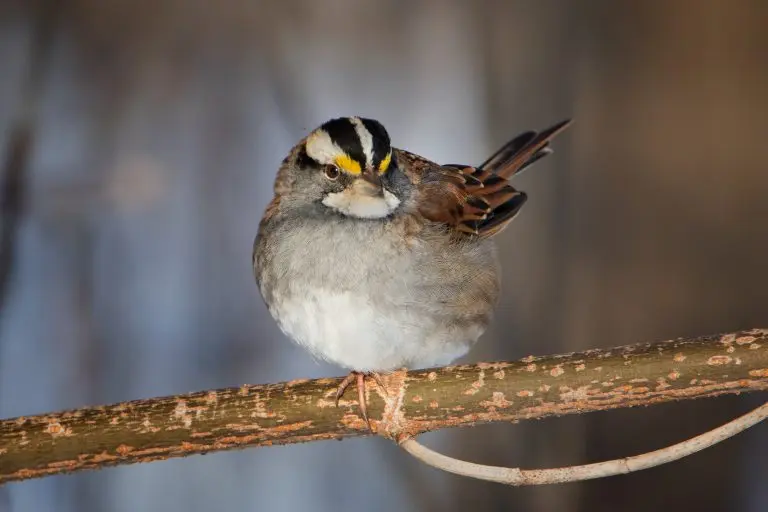
White-throated Sparrows have a distinctive black and white striped head, bright white throat, and yellow between the eye and bill. Their backs are brown and underneath is gray.
- Length: 6.3-7.1 in (16-18 cm)
- Weight: 0.8-1.1 oz (22-32 g)
- Wingspan: 7.9-9.1 in (20-23 cm)
White-throated Sparrows are migratory birds, breeding mostly in Canada before heading south in winter to Eastern and Southern states and the Pacific Coast.
You can find White-throated Sparrows on the ground in forests and woods and along the edges of wooded areas, often in large flocks.
White-throated Sparrows diet is mainly seeds of grasses and weeds as well as fruits such as grape, sumac, mountain ash, blueberry, blackberry, and dogwood. They will also eat a large number of insects from the forest floor, especially in summer.
You can attract White-throated Sparrows to your backyard feeders with millet and black oil sunflower seeds on platform feeders.
Check out these articles if you want to know more about birds in North America:
- Backyard Birds in Every State – Free Picture ID Printable
- Hummingbirds in North America
- Birds with Red Heads
8. House Wren
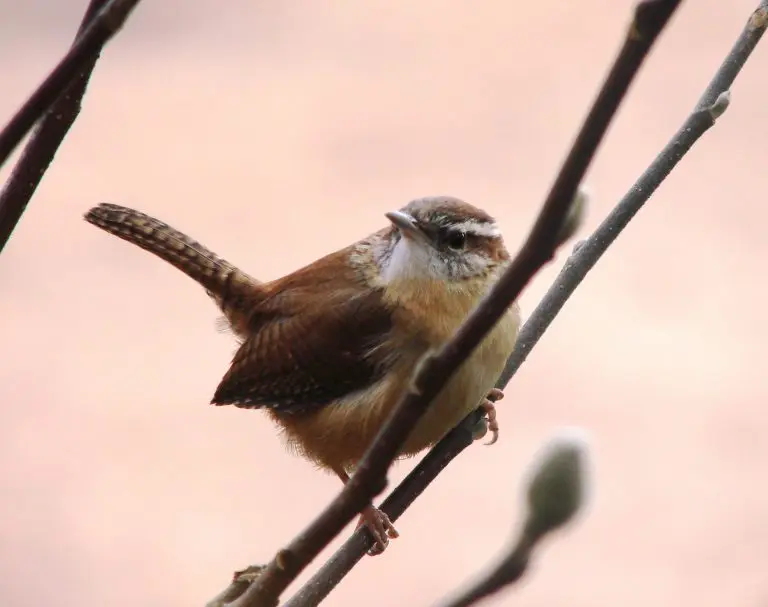
House Wrens are small nondescript brown birds with darker barred wings and tails and a paler throat.
- Length: 4.3-5.1 in (11-13 cm)
- Weight: 0.3-0.4 oz (10-12 g)
- Wingspan: 5.9 in (15 cm)
House Wrens spend their summer breeding in most states before migrating to the far south and Mexico for winter.
House Wrens can be found in backyards, parks and open woods foraging for insects and spiders.
They can often be found energetically hopping through tangles and low branches with their tails up, stopping to sing their cheerful song.
House Wrens are fierce for their size, when it comes to getting the best nest holes, they will often harass larger birds, sometimes dragging eggs or nestlings out of a nest site they want.
You can attract more House Wrens to your backyard by leaving piles of brush or putting up a nest box.
9. Great Crested Flycatcher
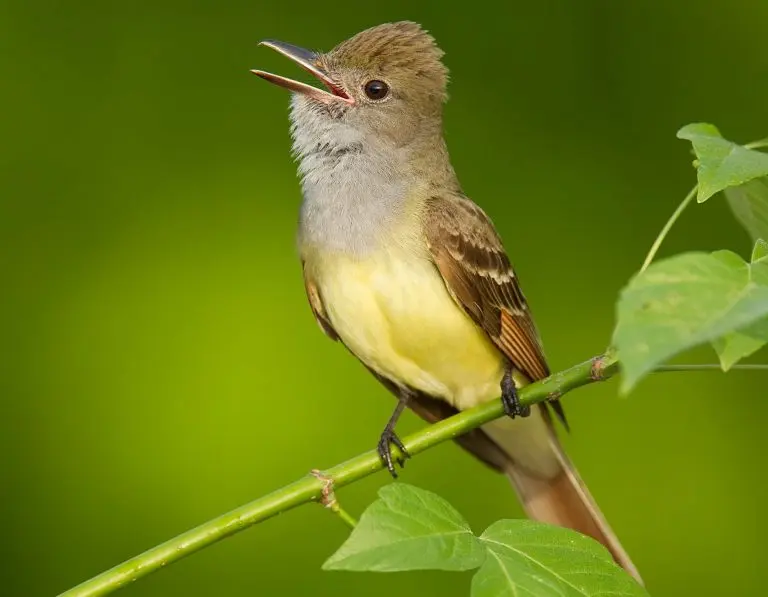
Great Crested Flycatchers are brown on the back with a yellow belly and gray throat. They have reddish flashed in the wing and tail feathers. The crest is not very obvious.
- Length: 6.7-8.3 in (17-21 cm)
- Weight: 0.9-1.4 oz (27-40 g)
- Wingspan: 13.4 in (34 cm)
Great Crested Flycatchers breed over much of Eastern North America and spend the winter in southern Florida, southern Mexico, and Central America.
They sit perched up high in woodland waiting for large insects flying such as butterflies, grasshoppers, moths, wasps, and also spiders. They can be found in mixed woodlands and at the edges of clearings, parks, and tree-lined neighborhoods or perched on fenceposts or other man-made structures. They will also eat berries and small fruit.
To attract more Great Crested Flycatchers to your backyard try planting native species of plants and leaving brush piles to attract insects. plant berry-producing plants and put up a nest box as they readily take up residence in them.
10. Female House Finch
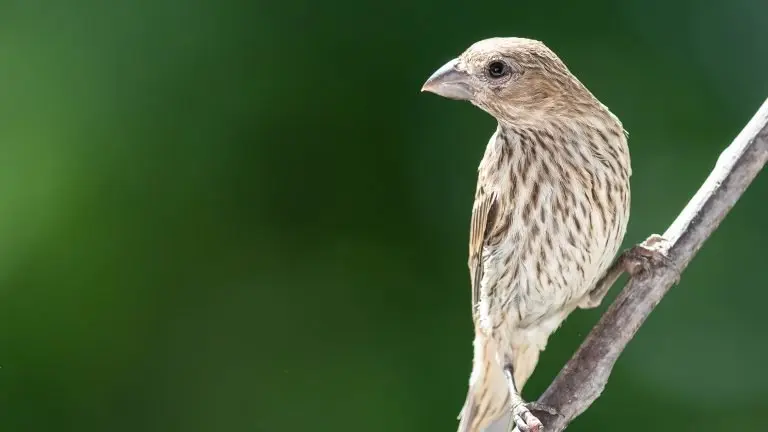
House Finches males have a red head and breast but the females are brown-streaked small birds.
- Length: 5.1-5.5 in (13-14 cm)
- Weight: 0.6-0.9 oz (16-27 g)
- Wingspan: 7.9-9.8 in (20-25 cm)
Originally only in western states, House Finches were introduced to the eastern states and have done very well, even pushing out the Purple Finch.
They can be found in parks, farms, forest edges, and backyard feeders. They can be found in noisy groups that are hard to miss.
You can attract more House Finches to backyard feeders with black oil sunflower seeds or nyjer seeds in tube feeders or platform feeders.
11. Female Purple Finch
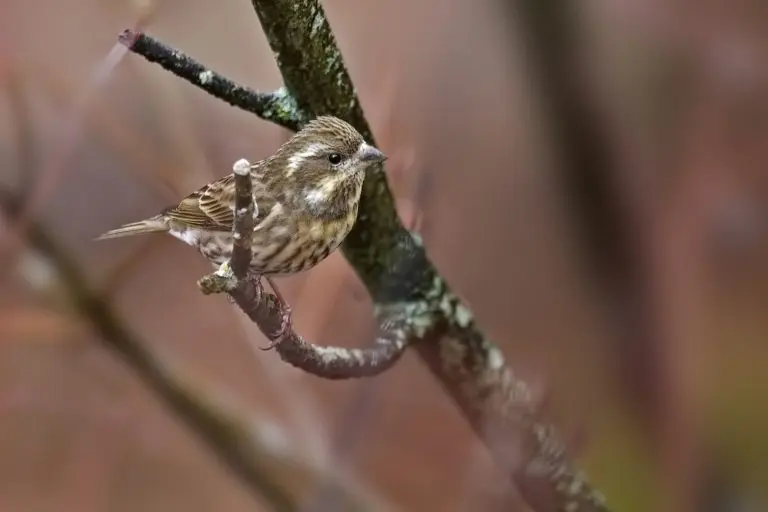
Female Purple Finches are brown-streaked birds.
Males have reddish-purple heads and breasts. They look similar to House Finch.
- Length: 4.7-6.3 in (12-16 cm)
- Weight: 0.6-1.1 oz (18-32 g)
- Wingspan: 8.7-10.2 in (22-26 cm)
They breed in Canada and overwinter in eastern states but can be found all year in the north-east are Pacific coast.
They readily come to feeders for black oil sunflower seeds.
12. Eastern Phoebe
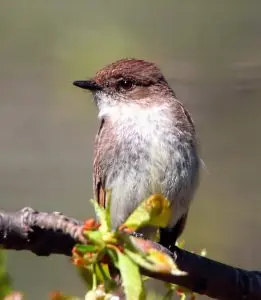
Eastern Phoebes are plump songbirds that are grayish-brown on the back and whitish underneath and with a darker head.
- Length: 5.5-6.7 in (14-17 cm)
- Weight: 0.6-0.7 oz (16-21 g)
- Wingspan: 10.2-11.0 in (26-28 cm)
Eastern Phoebes are migratory birds, breeding across northeastern and central states and into Canada before migrating to the southeast and Mexico for winter.
Some birds may remain all year towards the south of their range.
Eastern Phoebes tend to be found alone, rather than in pairs or flocks, in quiet woodland wagging their tails from low perches.
As they are flycatchers, flying insects make up the most of their diet but they will also eat spiders and other insects, small fruit and seeds. They often nest on bridges and barns or houses, making a nest out of mud and grass.
To attract more Eastern Phoebes to your backyard try putting up a nest box or native plants that produce berries.
13. Pine Siskin
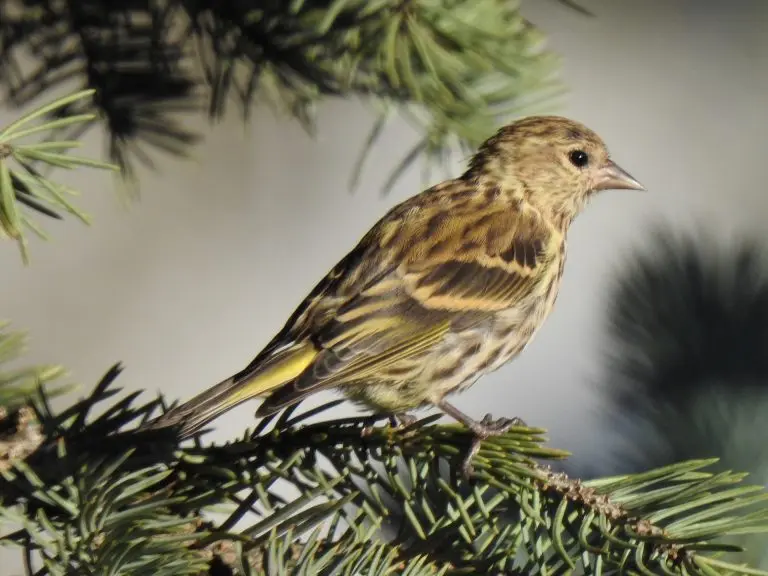
Pine Siskins are small finches that are brown with yellow streaks in the wing and tail. They have a forked tail and pointed wings, with a short pointed bill.
- Length: 4.3-5.5 in (11-14 cm)
- Weight: 0.4-0.6 oz (12-18 g)
- Wingspan: 7.1-8.7 in (18-22 cm)
Pine Siskins remain all year in the pine forests in the western states and along the Canadian Border. Some also breed in Canada before heading south for winter.
They can be found over much of North America depending on pine cone crops.
As their name suggests Pine Siskins predominantly eat seeds from conifers but they also eat young buds and seeds from grasses and weeds.
Pine Siskins can be attracted to backyards with thistle and nyjer feeders but also black oil sunflower seeds and suet.
14. Chestnut-backed Chickadee
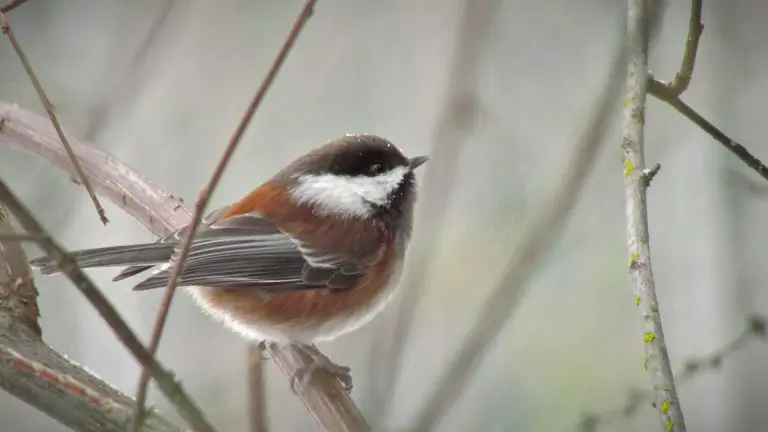
Chestnut-backed Chickadees are tiny birds with black and white on their heads, rich chestnut brown on the back, and gray wings and belly.
- Length: 3.9-4.7 in (10-12 cm)
- Weight: 0.3-0.4 oz (7-12 g)
- Wingspan: 7.5 in (19 cm)
They live flocks in wet evergreen forests along the Pacific Northwest Coast and are regular visitors to backyard feeders.
Insects including caterpillars, spiders, wasps, and aphids make up most of their diet, with seeds, berries, and fruit making up the rest.
You can attract Chestnut-backed Chickadees to your yard with black-oil sunflower seeds, suet, nyjer, peanuts, or mealworms in tube feeders, platform feeders, or suet cages. They will also use nest boxes.
15. American Tree Sparrow
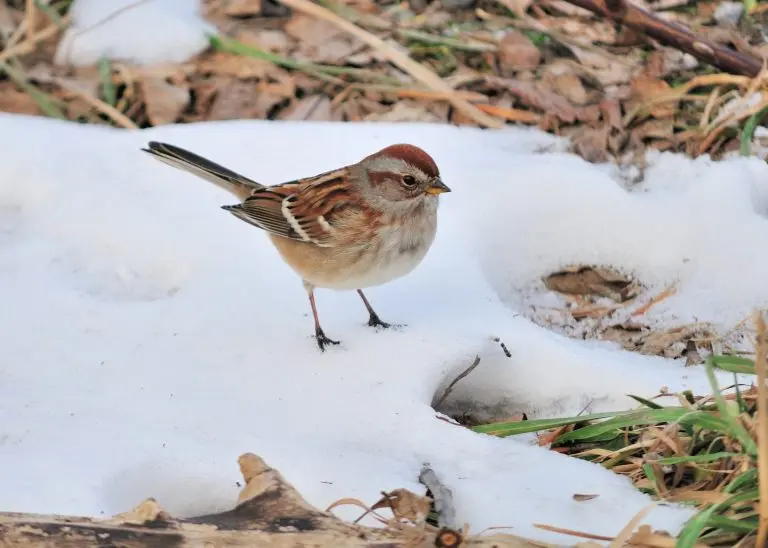
American Tree sparrows are long-tailed brown-streaked plump birds with rusty caps, gray faces, and a rusty eyeliner.
- Length: 5.5 in (14 cm)
- Weight: 0.5-1.0 oz (13-28 g)
- Wingspan: 9.4 in (24 cm)
American Tree Sparrows are a bird of winter in the US and a bird of summer in Canada.
They breed in the far north of Canada and in Alaska and migrate to most US states for the winter, except the Pacific Coast and Gulf Coast.
They forage in small flocks in weedy fields and under bird feeders.
You can attract more American Tree Sparrows to your backyard platform feeders with black oil sunflower seeds, nyjer, cracked corn, and millet. They also feed off the ground under tube feeders foraging for seeds dropped or discarded from above.
16. Field Sparrow
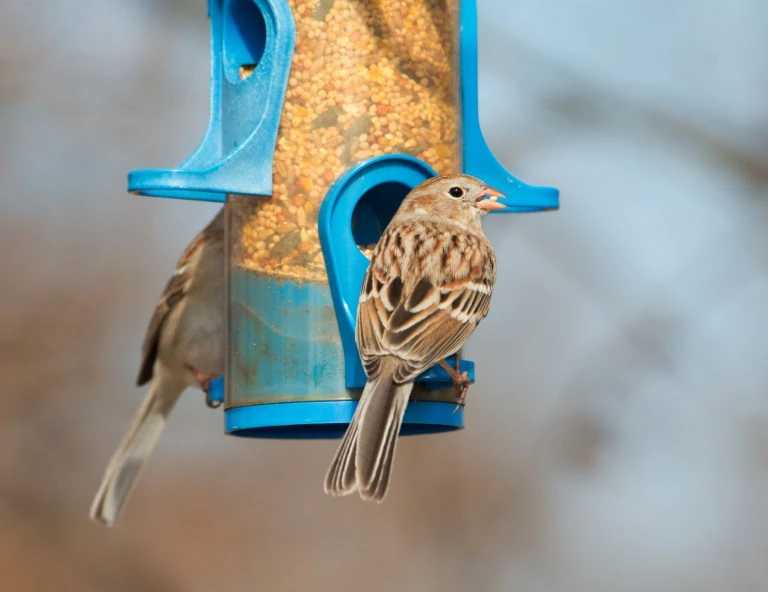
Field Sparrows are small slender brown-backed birds, streaked with black. Their undersides are gray as are their heads and they have a reddish crown and pink bill.
- Length: 4.7-5.9 in (12-15 cm)
- Weight: 0.4-0.5 oz (11-15 g)
- Wingspan: 7.9 in (20 cm)
Field Sparrows remain all year in the east but those that breed in the Mid-West head south for winter.
They quietly feed on weeds and seeds and can be easily missed as they prefer abandoned fields and are shy. In the breeding season, the males will sing from a perch in the early mornings and so they are easier to spot.
17. Female Brown Headed Cowbird
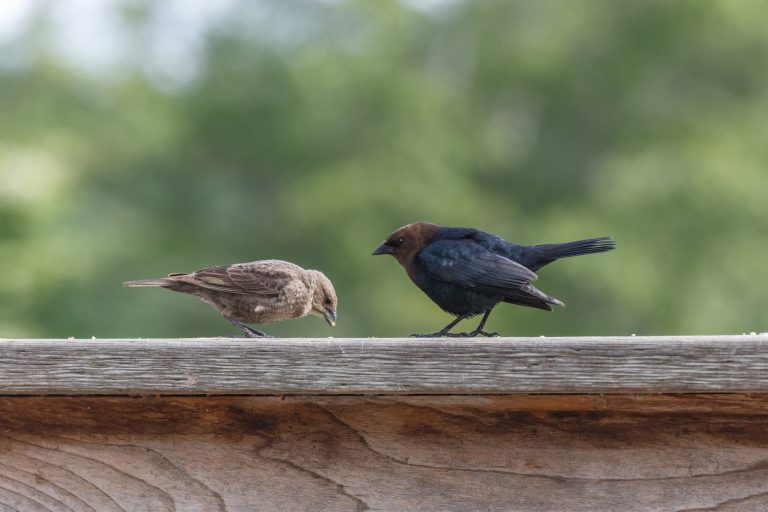
Female Brown-headed Cowbirds are brown all over with slight streaking.
Males are larger and black-bodied with brown heads and with short tails.
- Length: 76.3-8.7 in (19-22 cm)
- Weight: 1.3-1.8 oz (42-50 g)
- Wingspan: 14.2 in (36 cm)
Brown-headed Cowbirds breed in much of the north and west of North America before heading further south but remain all year in the Eastern and Southern states and Pacific Coast.
They are often considered a nuisance as they destroy the eggs of smaller songbirds so that they can lay their eggs in the nest and have the bird foster their chicks.
18. Bewick’s Wren
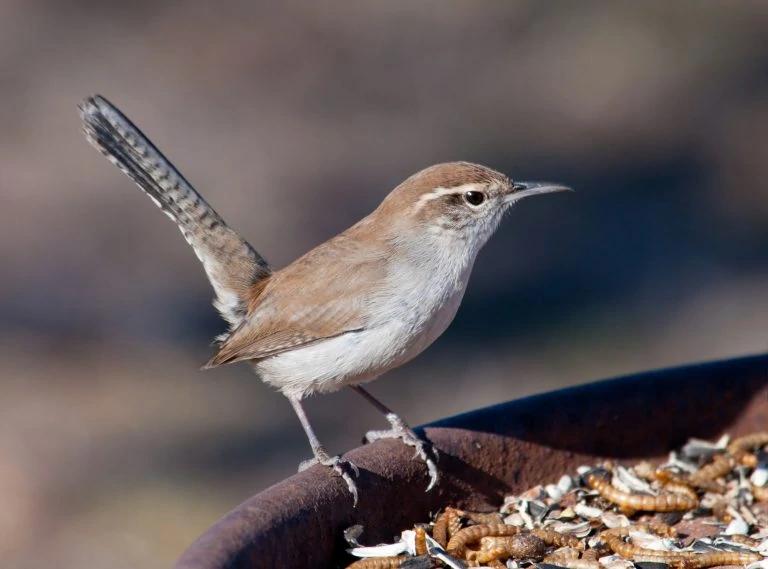
Bewick’s Wrens are brown-backed birds with long upright tails. They have gray bellies and a white stripe over the eye.
- Length: 5.1 in (13 cm)
- Weight: 0.3-0.4 oz (8-12 g)
Bewick’s Wrens live in southern and western states all year with some small movements in winter.
You can find them in scrub, thickets and open woodland, hopping from branch to branch flicking their long tails.
They feed on insects and larvae and may visit backyard feeders for suet, mealworms and hulled sunflower seeds.
The best bird feeder to attract small birds without bully birds such as grackles eating all the seed is this Woodlink caged feeder as the cage is far enough away from the feeder to prevent bigger birds just putting their heads through.
Check out these articles if you want to know more about birds in North America:
- Backyard Birds in Every State – Free Picture ID Printable
- Hummingbirds in North America
- Birds with Red Heads
How to Identify Birds
Here are some tips to help you identify birds so wherever you are birding you have the knowledge to document and find the bird in a guide:
- Size – Size is the easiest thing to notice about a bird. Birds are often measured in inches or centimeters in guide books. It’s best to take a note of the bird in terms of small, medium, or large to be able to look for it later. A small bird is about the size of a sparrow, a medium bird is about the size of a pigeon and a large bird is the size of a goose.
- Shape – Take note of the silhouette of the bird and jot it down or draw the outline. Look at tail length, bill shape, wing shape, and overall body shape.
- Color pattern – Take a note of the main color of the head, back, belly, and wings, and tail for the main color and then any secondary colors or patterns. Also take note of any patterns such as banding, spots, or highlights.
- Behavior – Are they on the ground or high up in the trees. Are they in flocks or on their own? Can you spot what they are eating?
- Habitat – Woodlands, parks, shrubs, grasslands or meadows, shore or marsh.
- Use a bird identification app such as those created by ebird or Audubon

